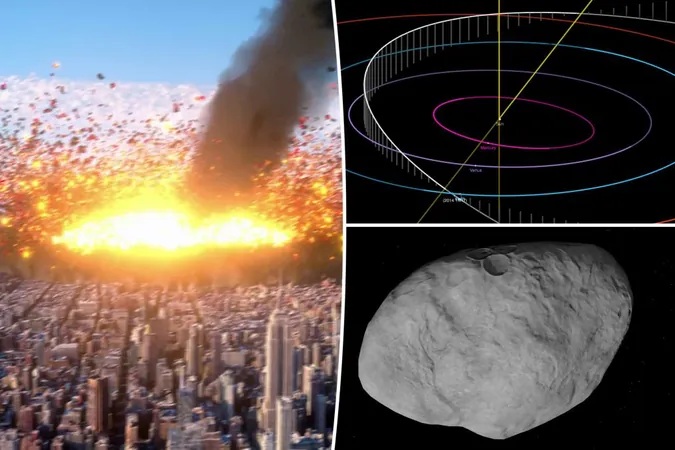
Asteroid 2024 YR4 No Longer a Threat, But a New Danger Lurks in Space
2025-03-26
Author: Ken Lee
In a sigh of relief for Earth, asteroid 2024 YR4, categorized as a potential 'city-killer,' has been deemed unlikely to collide with our planet in December 2032. However, experts warn that we should not let our guard down, as other cosmic threats continue to loom.
Originally, asteroid YR4 posed a significant danger with an impact risk factor of 3.1%—the highest risk level recorded since the establishment of NASA's Center for Near Earth Object Studies (CNEOS). Just a week later, this risk plummeted to an astonishingly low 0.0017%, bringing temporary calm to astronomers and space enthusiasts alike. Yet, because of its peculiar orbital path, YR4 could still return to threaten Earth in the future.
Asteroid YR4 belongs to a group known as resonant asteroids. These celestial bodies have orbits that occasionally draw them close to Earth, increasing the likelihood of a collision. Jupiter's immense gravitational pull influences these paths, rendering the future trajectory of such asteroids uncertain. Although YR4's next close pass is anticipated for 2052, researchers note that orbital changes could occur, shifting the asteroid's flight path and its collision risk.
The stakes of YR4 colliding with Earth are staggering. If it were to strike, the impact would unleash an explosive force equivalent to 8 megatons of TNT—about 500 times the strength of the atomic bomb dropped on Hiroshima—endangering the lives of hundreds of millions.
Moreover, the danger doesn’t stop with YR4. A larger asteroid known as 887 Alinda measures a daunting 2.5 miles in diameter and, while also not currently on a collision course, has the potential to trigger global extinction should its trajectory align with ours.
While the risks these resonant asteroids pose may seem distant, they could return to the same orbital paths as Earth about every four years, driven by Jupiter's orbit, which takes approximately 12 years.
Space is teeming with potentially hazardous asteroids. For instance, on March 26, the asteroid 2014 TN17 flew by Earth at a safe distance of about 3.2 million miles—thirteen times the distance to the moon. This asteroid, measuring over 540 feet, is large enough to devastate a metropolitan area but currently poses no risk of impact.
Additionally, astronomers are keeping a close eye on the infamous 'god of chaos,' asteroid Apophis, which is set to pass closer to Earth than some satellites in 2029. This event has generated substantial attention, raising both scientific curiosity and concerns about the safety of our planet.
With asteroids continuously monitored by agencies around the world, there is hope that we can keep one step ahead of these astronomical threats. As research into these cosmic bodies evolves, so does our understanding of how to protect Earth from potential hazards. Stay tuned for more updates on future asteroid encounters!



 Brasil (PT)
Brasil (PT)
 Canada (EN)
Canada (EN)
 Chile (ES)
Chile (ES)
 Česko (CS)
Česko (CS)
 대한민국 (KO)
대한민국 (KO)
 España (ES)
España (ES)
 France (FR)
France (FR)
 Hong Kong (EN)
Hong Kong (EN)
 Italia (IT)
Italia (IT)
 日本 (JA)
日本 (JA)
 Magyarország (HU)
Magyarország (HU)
 Norge (NO)
Norge (NO)
 Polska (PL)
Polska (PL)
 Schweiz (DE)
Schweiz (DE)
 Singapore (EN)
Singapore (EN)
 Sverige (SV)
Sverige (SV)
 Suomi (FI)
Suomi (FI)
 Türkiye (TR)
Türkiye (TR)
 الإمارات العربية المتحدة (AR)
الإمارات العربية المتحدة (AR)